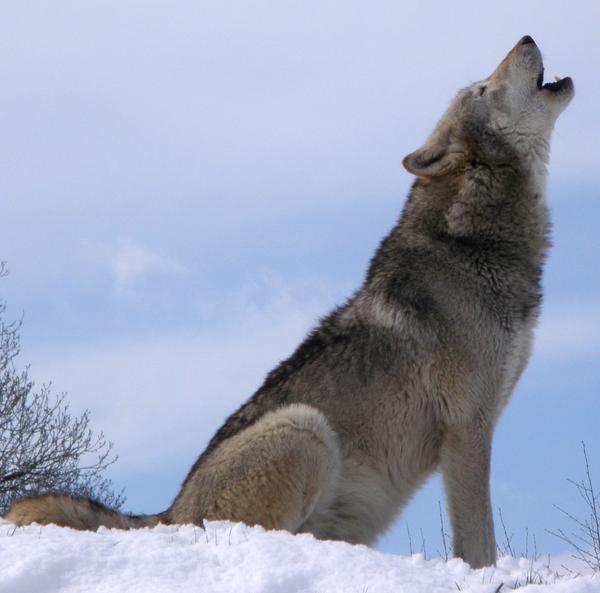"Fieldnotes," January 25, 2015: "Wolf Sounds," written by Tara Mahoney and Katy Stillerman; read by Caroline Kurtz.
Deep, rough growling can occur during food challenges among wolves, or when an adult disciplines a pup. "Stay away!" is the rather obvious point. The pure-toned, high-pitched sound of a wolf whimpering or whining doesn't travel as far as a growl, and neither, usually, does the sound's intended target; a pup whines to solicit care from an adult, and male-female pairs whimper among one another during the breeding season. Wolves bark to warn others in the pack that other animals have invaded their territory. This is an alarm bark; it usually precedes a howling session. But a wolf's bark can also threaten or challenge an intruder, or gather a pack together to chase prey. Barking can indicate any kind of excitement.
And howling? Before a hunt, a pack will group together and let out a chorus of howls, with no individual howling on the same note. The sound of each pack's chorus is distinctive enough to lead scattered members back together in the darkness of dense forest at night.
(Broadcast: "Fieldnotes," 1/25/15. Listen weekly on the radio, Sundays at 12:55 p.m., or via podcast.)
You can listen to the broadcast at this source link



No comments:
Post a Comment